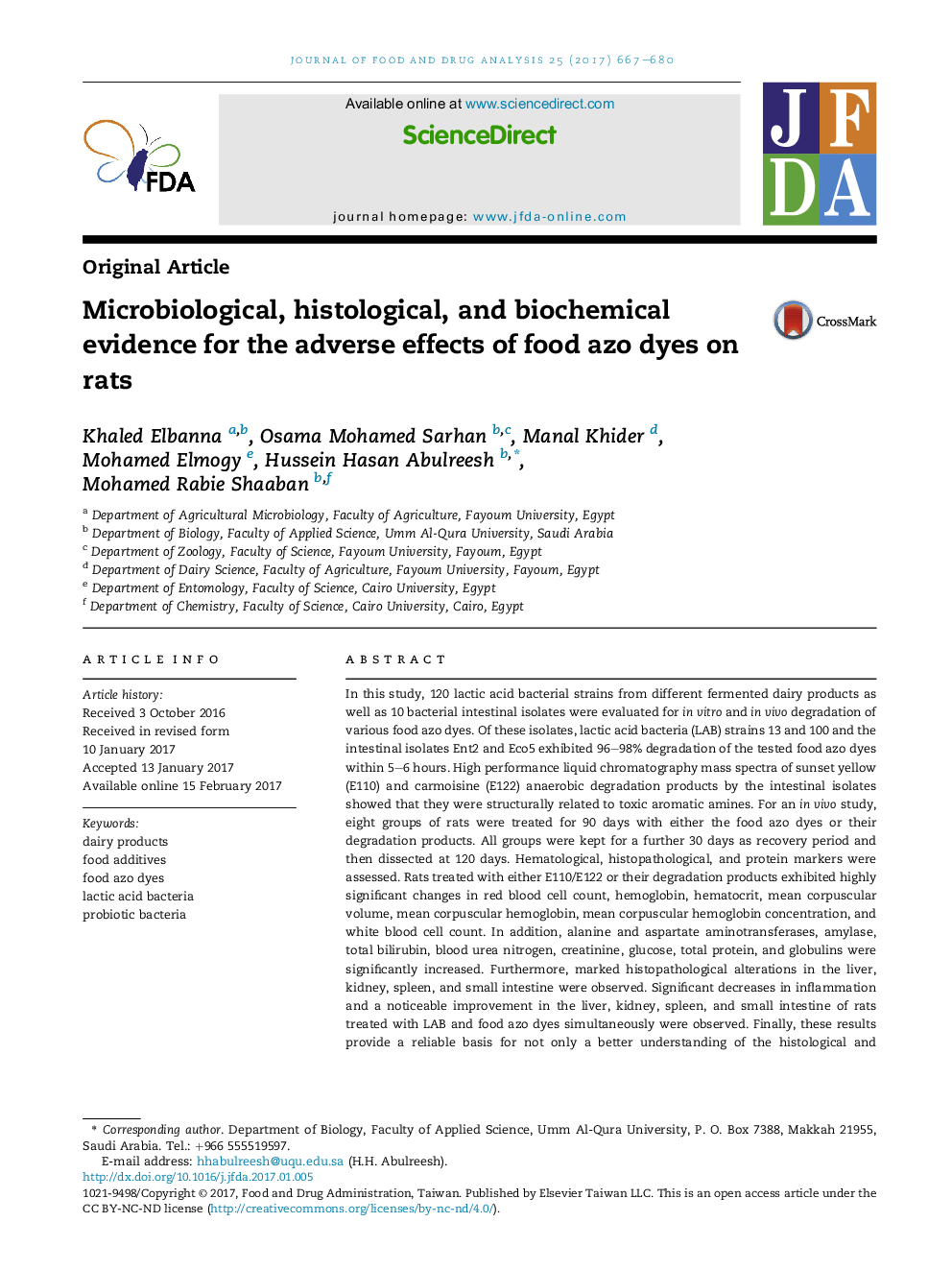| کد مقاله | کد نشریه | سال انتشار | مقاله انگلیسی | نسخه تمام متن |
|---|---|---|---|---|
| 5551050 | 1402937 | 2017 | 14 صفحه PDF | دانلود رایگان |
- Synthetic food colorants such E110 and E122 as well as its degradation products showed significant adverse hematological, biochemical and histological effects in treated rats.
- Lactic acid bacteria showed considerable effect in the recovery of rats administered with azo dyes and its degradation products.
- Lactic acid bacteria that are used in fermented dairy products are able to improve immune system and stimulate immunomodularity cells.
In this study, 120 lactic acid bacterial strains from different fermented dairy products as well as 10 bacterial intestinal isolates were evaluated for in vitro and in vivo degradation of various food azo dyes. Of these isolates, lactic acid bacteria (LAB) strains 13 and 100 and the intestinal isolates Ent2 and Eco5 exhibited 96-98% degradation of the tested food azo dyes within 5-6 hours. High performance liquid chromatography mass spectra of sunset yellow (E110) and carmoisine (E122) anaerobic degradation products by the intestinal isolates showed that they were structurally related to toxic aromatic amines. For an in vivo study, eight groups of rats were treated for 90 days with either the food azo dyes or their degradation products. All groups were kept for a further 30 days as recovery period and then dissected at 120 days. Hematological, histopathological, and protein markers were assessed. Rats treated with either E110/E122 or their degradation products exhibited highly significant changes in red blood cell count, hemoglobin, hematocrit, mean corpuscular volume, mean corpuscular hemoglobin, mean corpuscular hemoglobin concentration, and white blood cell count. In addition, alanine and aspartate aminotransferases, amylase, total bilirubin, blood urea nitrogen, creatinine, glucose, total protein, and globulins were significantly increased. Furthermore, marked histopathological alterations in the liver, kidney, spleen, and small intestine were observed. Significant decreases in inflammation and a noticeable improvement in the liver, kidney, spleen, and small intestine of rats treated with LAB and food azo dyes simultaneously were observed. Finally, these results provide a reliable basis for not only a better understanding of the histological and biochemical effects of food additives, but also for early diagnostics. In addition, LAB strains 13 and 100 may play an important role as potential probiotics in food and dairy technology as a probiotic lactic acid starter.
showed the adverse effects of food azo dye toxic metabolites and the beneficial role induced by probiotic bacteria199
Journal: Journal of Food and Drug Analysis - Volume 25, Issue 3, July 2017, Pages 667-680
